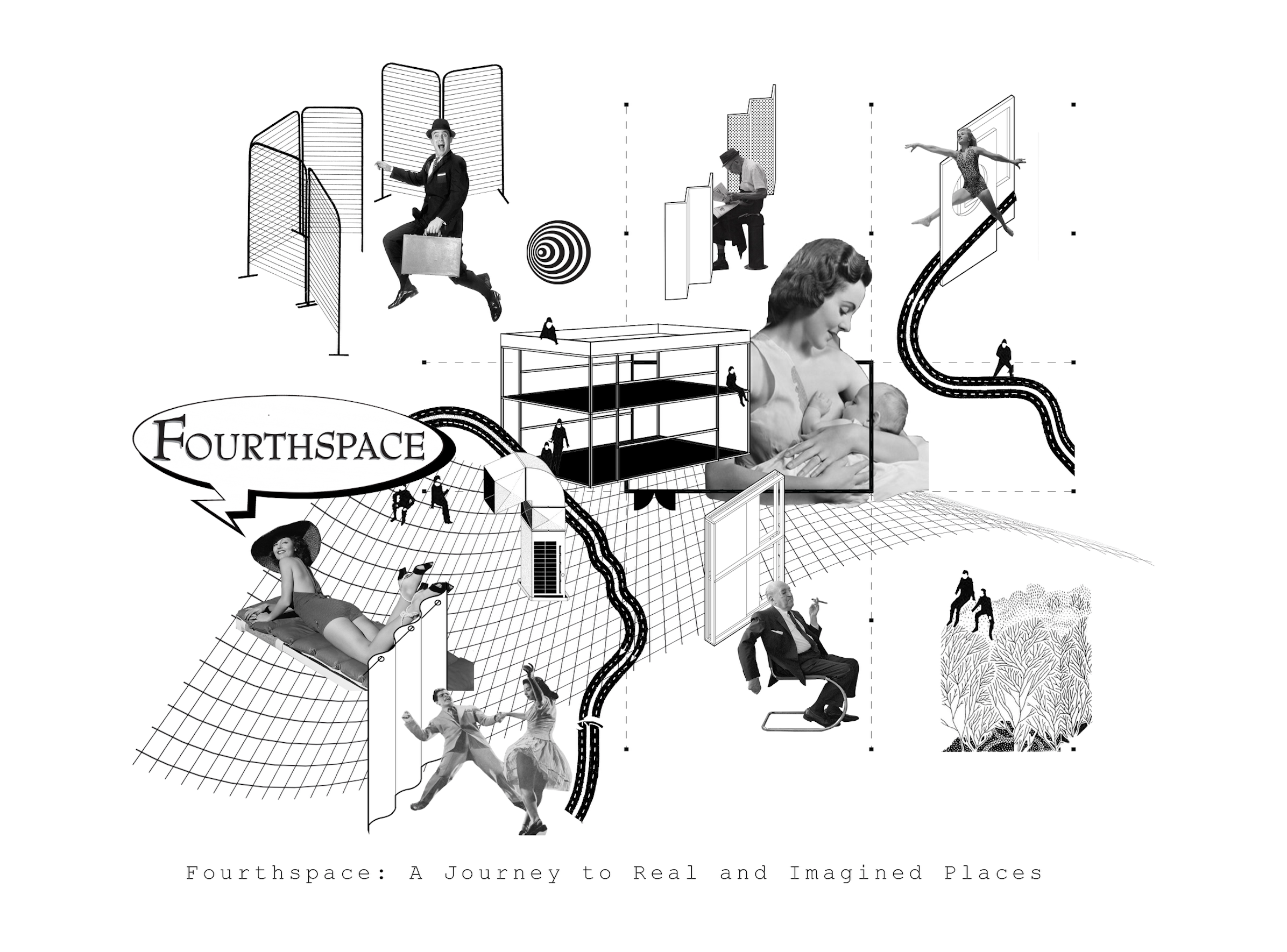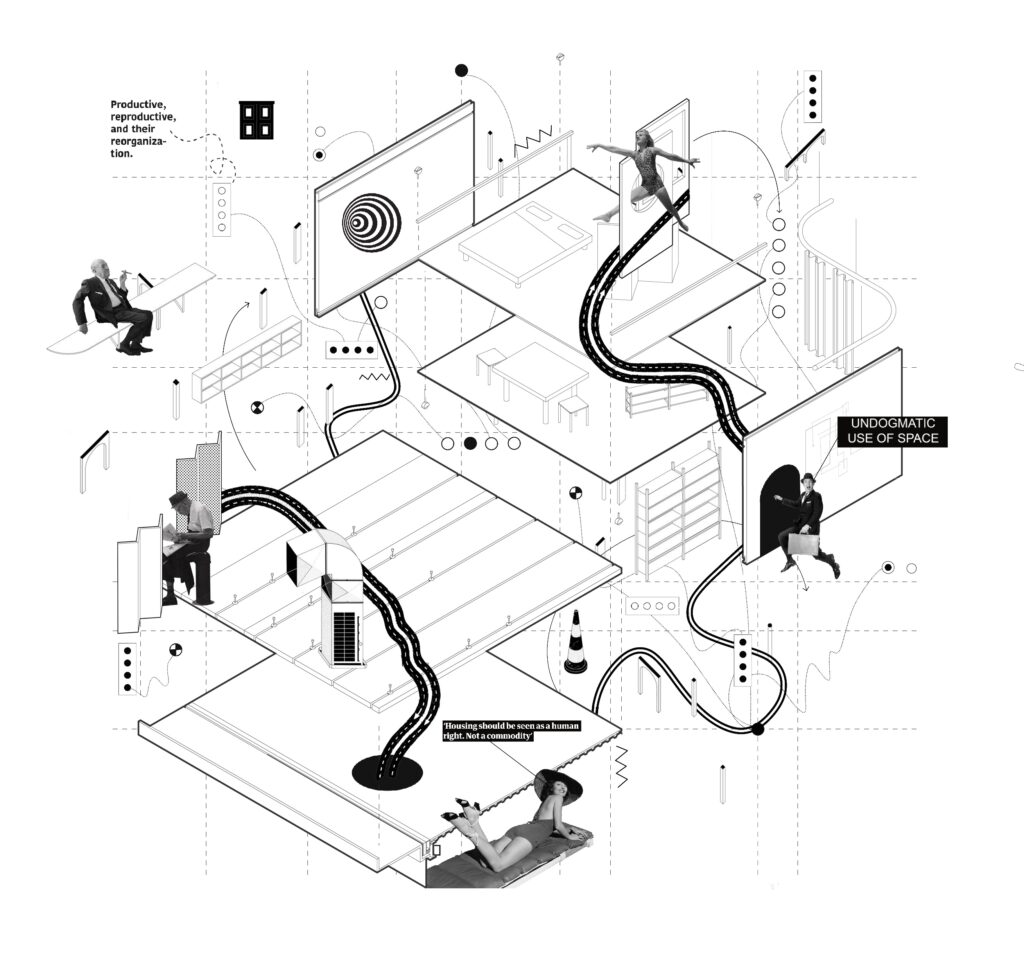
In the years following the height of the pandemic, we continue to face the compounding challenges of contemporary life in America. These include but are not limited to the precarious nature of employment, shifting domestic responsibilities, social isolation, and the housing market’s collapse. These challenges manifest spatially as we find ourselves outgrowing conventional spatial norms and the activities they historically accommodated. Boundaries blur as our homes become classrooms, streets become dining rooms, bedrooms become offices, and the office is a ghost. When our inherited spaces fail to adapt to evolving ways of life, when they even exacerbate these problems, we must generate new typologies and prototypes for staging contemporary life.

Guy Debord’s Society of the Spectacle, offers a conceptual framework for comprehending how contemporary capitalist society has reshaped human existence into a world dominated by images and commodities, resulting in alienation and a loss of authentic human connections. What were once fundamental social relationships forming the basis of communities have been replaced by mediated interactions centered around consumerist images like detached single-family homes and privatized public spaces. Debord’s critique highlights the potential for revolution and resistance through the medium of space. He advocates for various techniques, including détournement and dérive, which encourage an active departure from the prescribed paths of consumer society. Urban theorist Edward Soja’s Third Space Theory, suggests that because space is perpetually evolving and enabling boundary and identity negotiations, participants can construct new structures of authority and political initiatives.
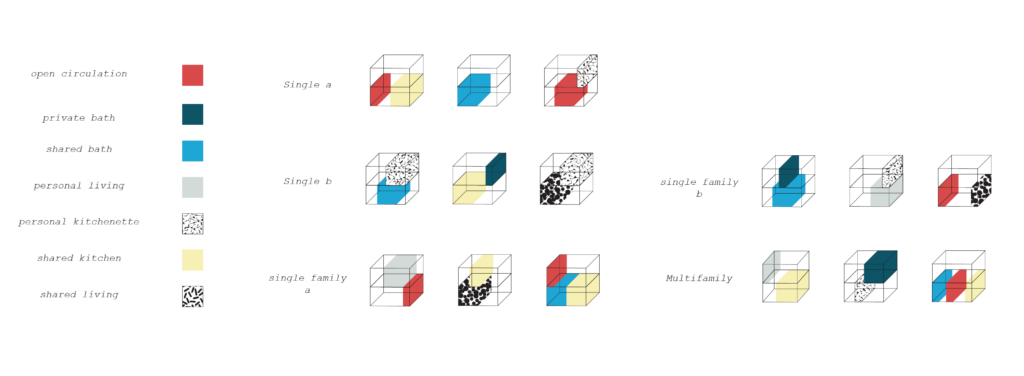

If traditional spatial typologies are outdated, then so is the role of the traditional architect. Whereas past architectural methodologies emphasized the passivity of object-form, contemporary architects are now tasked with creating active-form. The designer becomes programmer, or hacker, adjusting feedback loops and switches within a spatial matrix. Input codes can prompt new spatial capabilities and functionalities, including the design of a social condenser.
In “fourthspace: A Journey to Real and Imagined Places,” architecture functions as an operating system supporting dynamic programming through a multi-nodal infrastructure space. To avoid traditional hierarchical approaches in existing architectural production, this process heavily relies on participatory design, systems thinking, and tactile urbanism. It begins with an assembled proclamation, deconstructing and reassembling manifestos and symbols of the past to forge something new. This theme carries through the design process, where precedents are dismantled and reconfigured, uncovering pattern languages and spatial relationships between disparate contexts. Collage becomes a design tool in this recombination game. The resulting active-forms speculate moments of displacement, surrealism, hyperreality, chance, and surprise. “Fourthspacing” emerges as an act of subversion, guiding us through collective consciousness, where the curtain is drawn, and the back door is left unlocked.
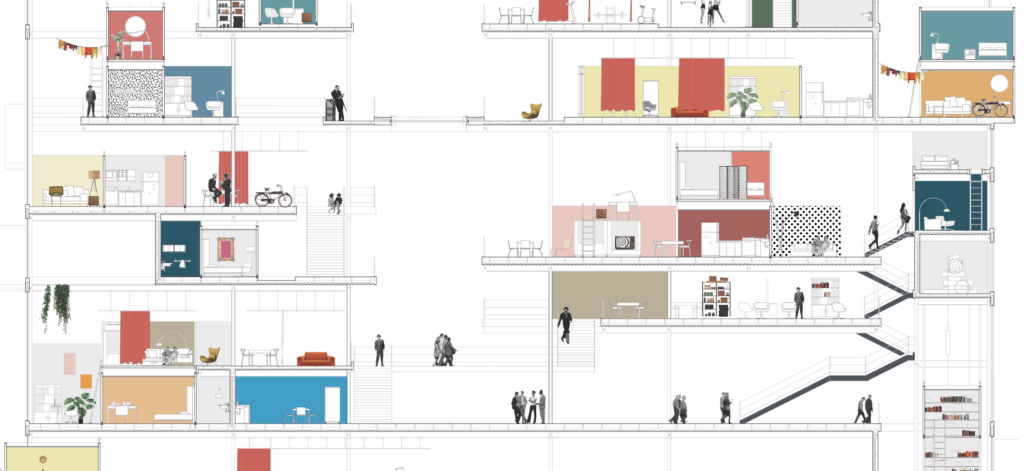
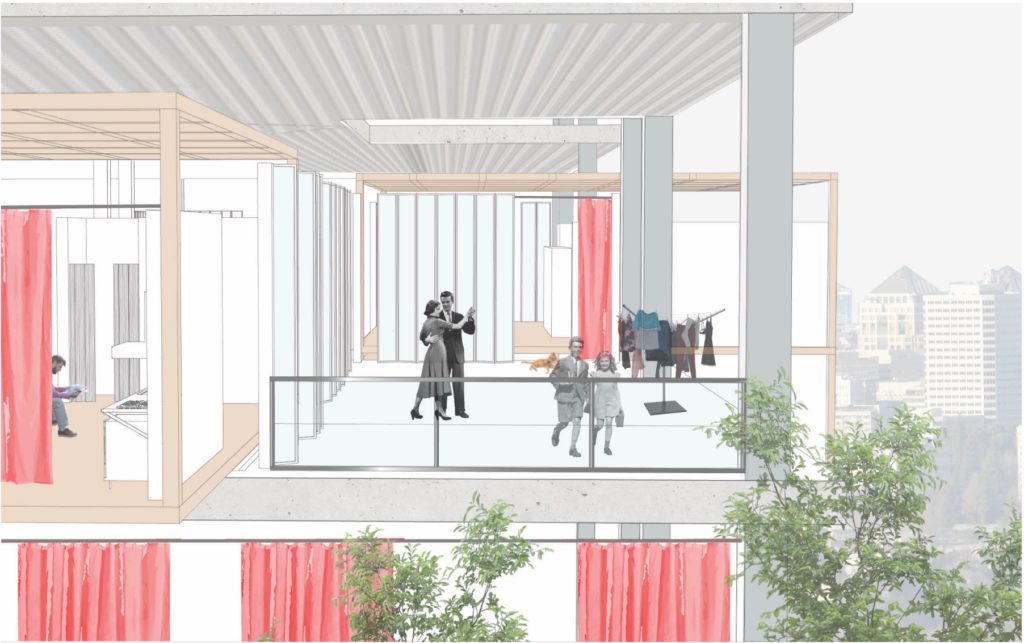
Professor Randall Packer envisions a similar cybernetic space that is a “fluid matrix of potentiality and realizable connections to the most far-reaching remoteness. It is a hyperspace where spatial trajectories have no boundaries, where temporal relations are amorphous, where wormholes reveal pathways that are instantaneous and geographically dispersed. It is a multifarious web of connections for all who inhabit and explore and share its dimensions…it is a space of invention and possibility, like lucid dreaming, where participants reinvent the world in the image of their own making.”
Austin, September 17, 2023
Team: Enrique Lozano, Rukaiya Jamali

